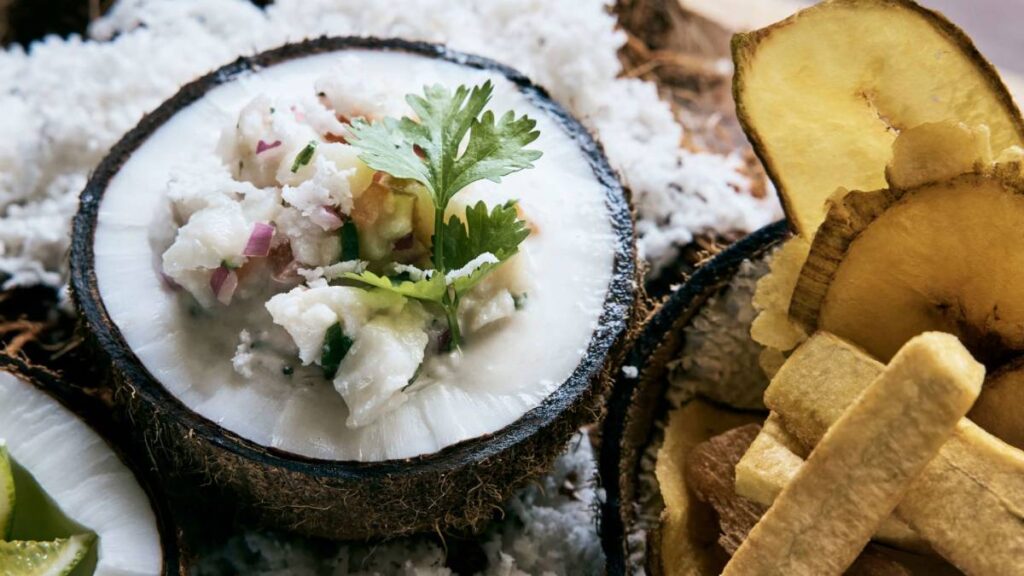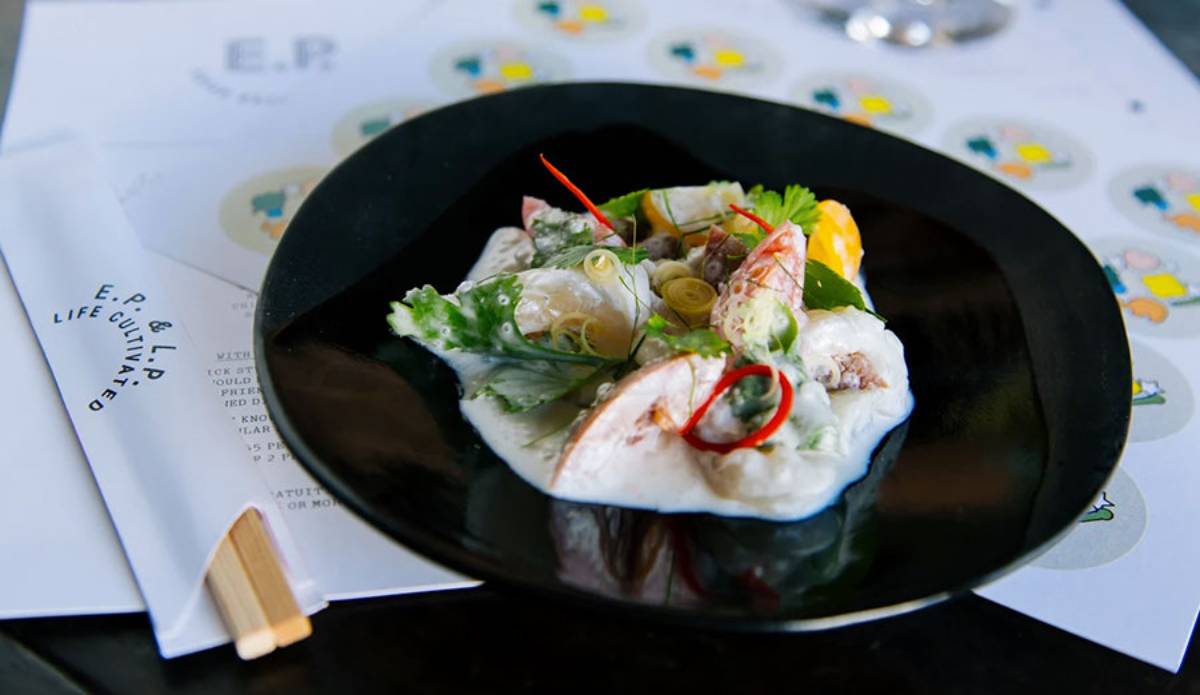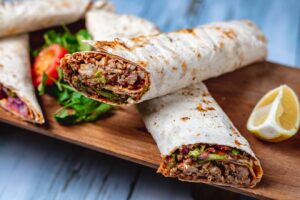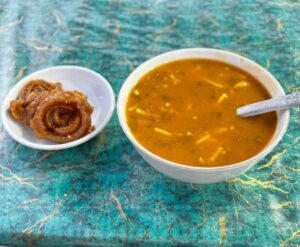The Food & Recipes Blog

Fijian Kokoda: Island-Style Street Ceviche
There’s a thing or two about eating street food that encapsulates the spirit of the place — the pitter-patter of everyday life, spices that teased the nostrils on a warm island breeze, and locals sharing a laugh over shared plates. In Fiji, kokoda fish salad is more than just a dish: it celebrates culture, freshness and simplicity. This roadside ceviche has become a classic emblem of that Fijian street food scene, whether sold from stalls or passed at beach-front feasts.
In this post, we’ll explore Kokoda’s roots, how it differs from other ceviches, and why it’s become such a beloved dish across the islands and beyond. Whether you’re a curious cuisine enthusiast or planning a culinary excursion to the South Pacific, this guide will give you a newfound appreciation for one of Fiji’s best traditional foods.
What is Kokoda?
A Brief Introduction to Fiji’s Signature Dish
Kokoda (pronounced koh-kon-dah) is Fijian ceviche, a raw fish salad combining the tang of citrus with the creaminess of coconut milk. It is traditionally made with fresh, white fish, typically mahi-mahi or snapper, which is marinated in lime juice to become opaque. The marination process ”cooks” the fish without heat, retaining its delicate flavour and texture.
After marinating, the fish is mixed with:
- Chopped onions
- Diced tomatoes
- Chillies (for a kick)
- Cucumbers or capsicum
- And most importantly, thick coconut cream
The result? A cooling, zesty, and creamy salad that’s both refreshing and deeply satisfying — perfect for the island climate.
The Origins and Cultural Significance of Kokoda
From Traditional Roots to Modern Plates
For generations, Kokoda has been part of Fijian culinary heritage. Indigenous Fijians, who have traditionally lived off the land and sea, devised the dish initially using what was nearby: local limes and coconuts from the trees.
Kokoda became a street food staple, served in banana leaf bowls at markets and festivals. While modern variations might include imported vegetables or creative plating, its essence remains true to its roots — a simple, honest celebration of the land and sea.
Community and Cuisine
In Fijian culture, food is closely tied to the community. Kokoda is often prepared for communal gatherings, family feasts, and celebratory events. It’s a dish that brings people together, much like other Pacific dishes such as Hawaiian poke or Tahitian poisson cru, but with a uniquely Fijian twist.
How Kokoda Differs From Other Ceviches
A Tropical Take on a Latin Classic
While ceviche is most commonly associated with Latin America, particularly Peru, island ceviche, like kokoda, sets itself apart through its use of coconut cream. This single ingredient gives Kokoda its velvety mouthfeel and subtly sweet edge, balancing the sharpness of the lime.
Key Differences:
Kokoda (Fiji)Ceviche (Latin America) uses coconut cream. Ceviche without dairy or coconut products is often milder in flavour. It is frequently spicier and includes more tropical ingredients. It is more likely to use maize and coriander. It is typically eaten as a starter or street food and is commonly a seafood appetiser in restaurants.
The addition of coconut makes Kokoda not only more indulgent but also more satiating — ideal for a quick lunch by the sea.
Street Food Culture in Fiji: Why Kokoda Stands Out
The Vibrancy of Fijian Street Markets
Fijian street food is an immersive experience — bursting with colour, sound, and the scent of sizzling spices. Amidst the rotis, curries, and cassava chips, Kokoda offers a cooling contrast. It’s often sold chilled from coolers or glass bowls, ladled into containers, eaten with a fork, or scooped with taro chips.
Its appeal lies in:
- Portability: Easy to eat on the go
- Freshness: Always made with the same-day catch
- Affordability: Accessible to locals and tourists alike
- Nutrition: High in protein, low in carbs, rich in omega-3s
How to Make Traditional Kokoda at Home
Simple Ingredients, Big Flavours
Recreating Kokoda in your kitchen is easier than you might think, provided you can access fresh fish and quality coconut cream. Here’s a traditional recipe to try at home.
Ingredients:
- 500g fresh white fish fillet (e.g. snapper or mahi-mahi)
- Juice of 5–6 limes
- 1 small red onion, finely diced
- 2 ripe tomatoes, diced
- 1 cucumber or capsicum, diced
- 1 small red chilli, finely chopped (optional)
- 200ml thick coconut cream
- Salt to taste
- Fresh coriander for garnish (optional)
Method:
- Dice the fish into bite-sized cubes and place in a glass or ceramic bowl.
- Add lime juice until the fish is fully submerged. Cover and refrigerate for 1–2 hours, stirring occasionally.
- Drain most lime juice once the fish turns white and opaque, leaving just a few tablespoons.
- Stir in the vegetables and chilli, mixing gently.
- Pour in the coconut cream and season with salt.
- Chill for 15–30 minutes before serving.
Serve in a chilled bowl or coconut shell with taro chips or crusty bread on the side.
The Health Benefits of Kokoda
A Nutritious Island Staple
Kokoda isn’t just delicious — it’s also packed with nutritional value. It combines the benefits of raw seafood, citrus, and coconut in one well-rounded dish.
Health Highlights:
- High in lean protein: Ideal for muscle repair and satiety
- Rich in omega-3 fatty acids: Supports heart and brain health
- Vitamin C from lime juice: Boosts immunity
- Medium-chain triglycerides (MCTS) from coconut cream: Provide sustained energy
It’s a smart option for those following pescatarian, paleo, or gluten-free diets and delivers vibrant island flavour.
Kokoda in Tourism and Culinary Trends
A Must-Try Dish for Visitors

As Fijian street food gains global recognition, kokoda is often promoted by tourism boards and featured on restaurant menus across the Pacific and Australia. For travellers, it offers an authentic taste of Fiji’s heritage.
Food tours in Suva and Nadi frequently include kokoda tastings, and it’s become a popular item in international fusion cuisine. Some chefs experiment with variations using prawns, scallops, or tofu, offering a contemporary spin on a timeless classic.
Bringing Kokoda to the World: A Growing Culinary Star
With the rise of plant-based and clean-eating trends, dishes like Kokoda are gaining international interest. Its freshness, simplicity, and health benefits make it well-suited for global palates seeking alternatives to deep-fried or processed meals.
Pacific island cuisine is slowly making its mark in cities like Sydney, London, and Vancouver, with Kokoda often leading the charge. It represents more than just food — it’s a story of tradition, sustainability, and island pride.
Why Kokoda Deserves a Spot on Your Plate

Fijian kokoda is not merely an island ceviche—it is a dish that embodies the heart of Fiji: its natural bounty, communal ethos, and street food culture. Its creamy coconut base, tangy lime-marinated fish, and crisp vegetables provide a refreshing and nutritious bite at any table.
Whether savoured atop a sunset beach in Nadi or eaten prepared at home in the hot afternoon sun, Kokoda is one dish that offers an authentic taste of the tropics. It’s simple to make, health-minded, and deeply satisfying.
Ready to try it? Explore the world of Fijian street food and bring the flavours of the Pacific to your kitchen with this island-style ceviche. Your taste buds will thank you.
Have you tried Kokoda before, or do you have your twist on the classic recipe? Share your experience in the comments below or tag us on social media with your island creations!









